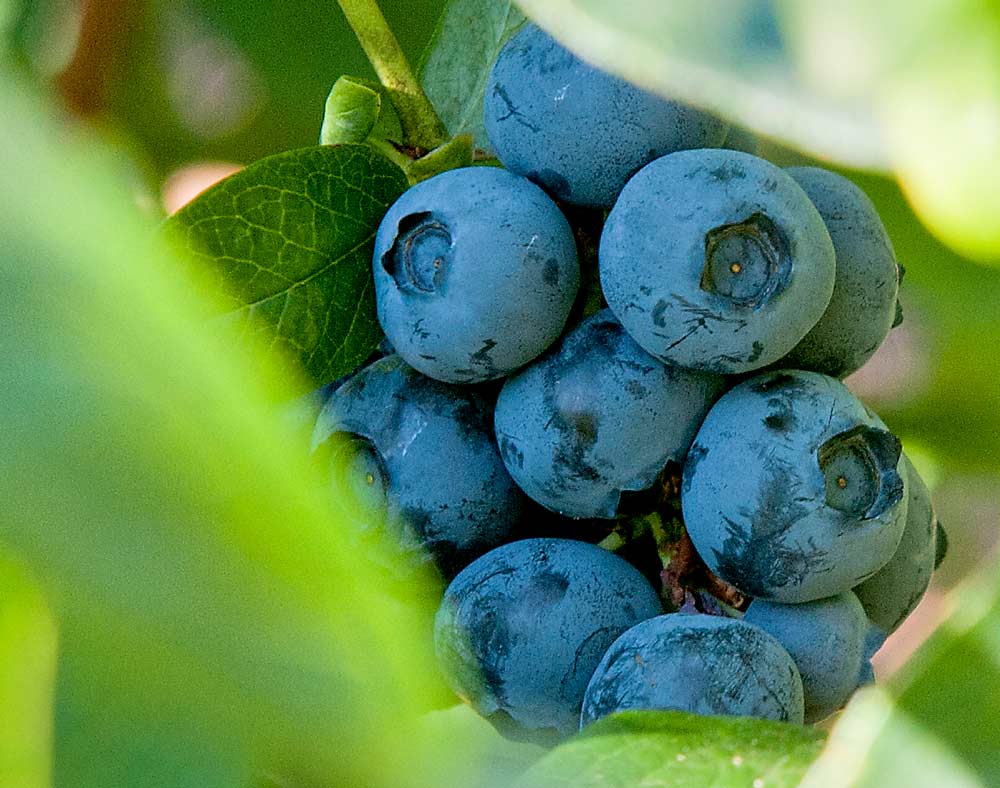
Earliblue blueberry growing in Oregon’s Willamette Valley in 2011. The blueberry crop is booming in Oregon and Washington, which together make up nearly 40 percent of the U.S. market. (Courtesy Lynn Ketchum/Oregon State University)
In a surprise comeback, Oregon regained the top spot among the nation’s blueberry producers in 2018, with a record-setting increase of 23.3 million pounds over the state’s 2017 production.
Bryan Ostlund, chair of the Oregon Blueberry Commission, said Oregon’s 2018 crop totaled
134.1 million pounds, with about 55 percent going to processing and about 45 percent to the fresh market.
Washington’s 2018 crop was estimated to be under 130 million pounds — lower than Oregon’s for the first time since 2014 when Washington overtook Oregon in total production.
U.S. blueberry production has shifted to the West Coast in recent years, Ostlund said, and aside from some good-natured competition between the states, the region is enjoying very strong growth.
Data from the USDA National Agricultural Statistics Service shows that in 2017, Oregon and Washington produced 228 million pounds of blueberries, totaling 38 percent of the national blueberry crop. In 1996, Oregon and Washington produced 25 million pounds of blueberries, or just 15 percent of the nation’s total crop.
Together, the four West Coast producers — California, Oregon, Washington and British Columbia — are driving the steady growth of the industry, including production for the fresh, processed, organic and export markets.
“It’s been quite a ride,” Ostlund said.
Touted in recent years as a “superfood” with many health benefits, blueberries have become a consumer favorite and are making their way into an increasing variety of products — driving both the fresh and processed markets.
The organic blueberry market has seen especially strong growth over the past decade, with organic production accounting for about 20 percent of the total crop in 2018, compared to about 2 percent in 2008. The Northwest produces about half of the nation’s organic crop.
As the industry matures and production continues to increase, blueberry growers are looking at labor-saving automation, with technical advancements coming in mechanical harvesters and optical sorters.
Growers are also looking at planting new varieties that satisfy consumer preferences and varieties that ripen later to extend the season. •
—by Jonelle Mejica






Leave A Comment